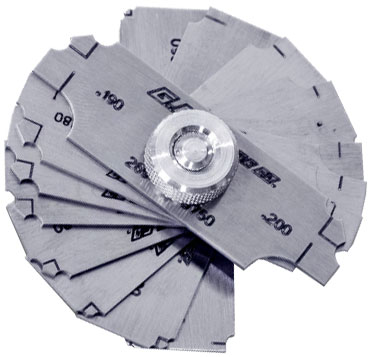Fillet Weld Layout Approaches: Optimizing Joint Performance and Looks for Structural Honesty
In the world of structural design and construction, the relevance of fillet weld style techniques can not be overstated. By meticulously considering factors such as weld account optimization, material option, joint prep work techniques, welding procedure effectiveness, and visual improvement techniques, engineers and makers can achieve an unified equilibrium between functionality and appearance in their bonded frameworks.
Weld Profile Optimization


Achieving an ideal weld account entails a careful consideration of elements such as product density, joint configuration, welding placement, and preferred welding speed. In addition, the choice of suitable welding parameters, such as voltage, existing, and travel rate, is essential in controlling the form and measurements of the fillet weld. Using sophisticated welding techniques, such as pulse welding or robot welding, can even more improve the weld profile to meet certain style requirements and top quality requirements.
In essence, weld account optimization is an essential aspect of fillet weld layout that straight influences the total performance and dependability of bonded joints in structural applications.
Product Selection Factors To Consider
When thinking about product selection for fillet weld layout, the compatibility of the base metals is a critical aspect influencing the architectural integrity of the joint. It is crucial to select products that not only bonded with each other efficiently yet also have comparable mechanical residential or commercial properties to make certain the load is uniformly dispersed between the weld and the base steels. Welding materials with significantly different buildings can result in concerns such as stress concentrations, early joint failure, or fracturing.
Additionally, the setting in which the welded structure will certainly operate must be taken right into account when selecting products. Variables like corrosion resistance, temperature variations, and exposure to chemicals can all affect the long life and performance of the weld joint. By picking materials that appropriate for the intended application and atmosphere, the overall resilience and reliability of the bonded joint can be significantly enhanced.
For that reason, thorough consideration of product compatibility and environmental variables is extremely important in making sure the weld joint's strength, resilience, and general architectural honesty.

Joint Preparation Strategies
Considering the essential function material choice plays in ensuring the structural honesty of fillet weld joints, it is important to apply precise joint preparation strategies that optimize the connection in between the base steels. Joint preparation is a vital action that directly influences the top quality and strength of the weld. One fundamental method is the cleansing of base steels to remove any type of impurities like corrosion, oil, or paint that could jeopardize the weld's honesty. This can be achieved through techniques such as grinding, cord brushing, or chemical cleaning.
In addition, tack welding the components in place before the final weld assists keep alignment and lessens distortion throughout the welding process. By diligently complying with these joint prep work techniques, welders can enhance the general performance and appearances of fillet weld joints while making sure structural soundness.
Welding Process Effectiveness
Efficient welding procedures are essential for accomplishing optimal productivity and top quality in fillet weld construction. One essential facet of boosting welding procedure efficiency is picking the suitable welding strategy. Elements such as product type, joint layout, and welding setting have to be very carefully considered to establish one of the most suitable technique. For example, processes like gas steel arc welding (GMAW) and flux-cored arc welding (FCAW) are typically made use of for fillet welds because of their convenience and speed (Gauge Fillet Weld).
Routine calibration of welding makers, inspection of consumables, and maintenance of welding lanterns can prevent downtime and remodel, ultimately conserving time and sources. Trained welders are much more experienced at adjusting parameters, troubleshooting concerns, and maintaining constant weld top quality.
Aesthetic Enhancement Approaches
To maximize the quality of fillet weld fabrication, carrying out aesthetic improvement try this website techniques can play an essential function in making sure accuracy and precision throughout the welding procedure. Visual aids such as weld size evaluates and amplifying lenses can help in examining weld profiles and dimensions precisely. By integrating these aesthetic enhancement techniques into the welding process, welders can achieve not only structurally sound fillet welds yet additionally aesthetically enticing results that satisfy industry standards.

Verdict
To conclude, maximizing fillet weld design includes mindful consideration of weld account, product selection, joint prep work, welding procedure efficiency, and visual improvement approaches. By executing these approaches, structural stability can be boosted while also accomplishing visual appeal. It is crucial to focus on both performance and looks in fillet weld layout to ensure the overall top quality and toughness of the joint.
By carefully considering factors such as weld account optimization, product option, joint prep work techniques, welding procedure effectiveness, and aesthetic you can try here improvement methods, engineers and fabricators can attain an unified equilibrium in between capability and look in their bonded structures.In the realm of fillet weld design, enhancing the weld profile plays an check over here important function in making certain architectural honesty and efficiency. The weld account, which includes the size and shape of the weld cross-section, straight influences the circulation of anxiety and load-bearing capability within the joint. It is necessary to pick products that not just weld together effectively but additionally have similar mechanical properties to make certain the load is evenly dispersed in between the weld and the base metals - Gauge Fillet Weld.In verdict, enhancing fillet weld design entails mindful consideration of weld profile, product choice, joint preparation, welding procedure effectiveness, and visual improvement techniques